The intricate roof tiles of the Himeji castle bears the seal of the old feudal system in Japan.
 This is Japan's most beautiful castle, the Himeji Castle. Because Himeji has only one thing to see and is a small city, we did not see the need to stay over night, so we left for Hiroshima on the same day.
This is Japan's most beautiful castle, the Himeji Castle. Because Himeji has only one thing to see and is a small city, we did not see the need to stay over night, so we left for Hiroshima on the same day.
Hiroshima is about 900km away from Tokyo, or 1240km from Niigata. The bullet train (shinkansen) cuts short the travel time by more than half. Instead of 13 hours on the road, it takes only 6 hours with the shinkansen. I have heard so much about Hiroshima before going there or even before coming to Japan. Most of us (of my age) have learnt about Japan's involvement in the World War 2 and specifically about Hiroshima in the Standard 4 Alam & Manusia textbook, up to the Form 5 SPM Sejarah textbook. How could anyone not heard about Hiroshima and its destruction by one of the world's first two atom bombs. My expectation of this place was somewhat high and I just could not wait to see and feel the historical past of the place.
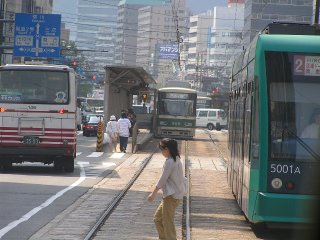 When we finally reached, I did not see remains of the wartime historical past nor broken buildings abandoned in between new ones, like how I would have expected. All I saw was a modern city, with two rivers confluencing at a point near the hotel which we stayed and a city run by the tram systems (Hiroshima Dentetsu). Reminded me alot about Melbourne and it's trams.
When we finally reached, I did not see remains of the wartime historical past nor broken buildings abandoned in between new ones, like how I would have expected. All I saw was a modern city, with two rivers confluencing at a point near the hotel which we stayed and a city run by the tram systems (Hiroshima Dentetsu). Reminded me alot about Melbourne and it's trams.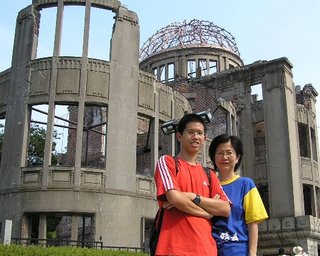
After checking into the hotel, we hopped on to the tram lines and headed for the "Genbaku Domu-Mae" station (which literally means A-bomb Dome Front St.)
 This is the A-Bomb Dome aerial view which I took from a bigger picture in display. It is one of the few buildings around the explosion's epicenter that partially survived the blast, and the city's only remaining bomb damaged building. The picture above showed the magnitude of the destruction, a city wiped clean of any building structures. Standing in front of the real structure was emotionally devastating. You could see in detail how the steel structures were ripped apart and how the edges of the beams were melted from the high intensity of the heat.
This is the A-Bomb Dome aerial view which I took from a bigger picture in display. It is one of the few buildings around the explosion's epicenter that partially survived the blast, and the city's only remaining bomb damaged building. The picture above showed the magnitude of the destruction, a city wiped clean of any building structures. Standing in front of the real structure was emotionally devastating. You could see in detail how the steel structures were ripped apart and how the edges of the beams were melted from the high intensity of the heat.
 This was the original building. It was once the Industrial Promotion Hall of Hiroshima, a new building that once stood proudly along the riverbanks, and then, after 8.15am on 6th August 1945, all that was left was it's skeleton frame.
This was the original building. It was once the Industrial Promotion Hall of Hiroshima, a new building that once stood proudly along the riverbanks, and then, after 8.15am on 6th August 1945, all that was left was it's skeleton frame.
 Remember the paper crane origami that we often see in Malaysia, it is the peace symbol at the Hiroshima's Peace Memorial Park. Here, there are hundreds of thousands of these cranes in display and formed into different patterns.
Remember the paper crane origami that we often see in Malaysia, it is the peace symbol at the Hiroshima's Peace Memorial Park. Here, there are hundreds of thousands of these cranes in display and formed into different patterns.
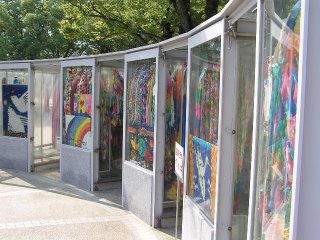 The designated area to hang the paper crane origamis. There are so many contributors each month that one has to sign up for a place before they are allowed to hang their cranes at the display area.
The designated area to hang the paper crane origamis. There are so many contributors each month that one has to sign up for a place before they are allowed to hang their cranes at the display area.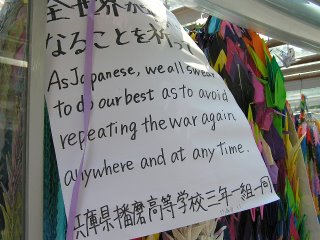
An interesting writing which I spotted....

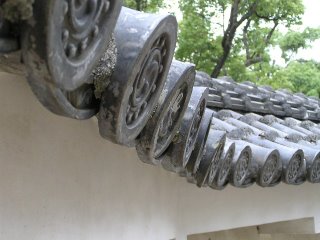
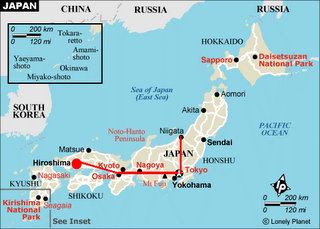
1 comment:
wah,your mum wore all your race's T
where's my trunks?
Send it back by mail laa
Post a Comment